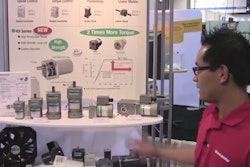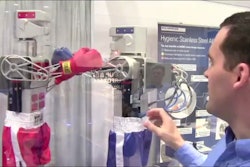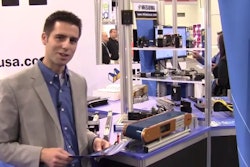It is being incorporated into ISA 88, the standard that for nearly two decades has proved its viability in the process control world.
For an in-depth description, links in this chapter will show you how to purchase the ISA documentation, see a demo on the OMAC website, and find the Wikipedia page describing the history and fundamentals of PackML.
Bottom line – PackML will make it easier for you to get consistent data out of machines on a packaging line from different OEMs and implemented using different control systems. It gives operators and technicians a common look and feel. It also promotes modularity, which, properly applied, streamlines programming and troubleshooting.
On a solitary machine this is interesting. But start producing lots of machines or installing lines, and the economies of scale really favor those who’ve adopted PackML. Start looking to gather production data for OEE or MES in a multivendor environment and PackML becomes a must-have.
What PackML isn’t is rocket science. PackML merely standardizes commonly used machine modes, states and tag names. The fact that every machine builder, software supplier and integrator has in the past had to develop their own incompatible terms is why PackML exists…as well as why some of these suppliers are reluctant to give up their proprietary solutions.
It is important to note that PackML does not impinge on a machine builder’s intellectual property, it simply standardizing aspects of communication the way that Ethernet TCP/IP did for non-realtime networking.
PackML benefits: a snapshot
PackML stands for the Packaging Machinery Language. It provides a standardized way to collect uniform data across machines, lines, shifts, plants and business units. This uniformity is essential to productivity-enhancing initiatives such as Overall Equipment Effectiveness (OEE) analysis and to simplify MES functions.
Essentially, PackML is a simple concept that standardizes key data point acquisition across different makes of packaging machinery. It reduces the learning curve for plant personnel by providing a common look and feel. PackML is independent of the control system vendor or programming language in use. It integrates readily to business systems with OPC, and promotes standardized, flexible data sets.
The machine builder’s initial investment is reusable across machines, which reduces subsequent software development costs and time to market, while reducing the amount of customized code to test and thereby increasing reliabilty. It predefines machine interface, integration and startup. It also simplifies after-sale support.
Packagers benefit from PackML by including it in their electrical specifications and requests for quotation. The greatest benefits come from integrating entire packaging lines so that individual machines, machine-machine communications and line control and data acquisition are standardized.
Criteria for specifying PackML
The problem is that if it isn’t broken, no one wants to spend money fixing it. So, when does it make the most sense to include PackML in your specification?
• When ordering a new packaging line
• When retrofitting an existing line
• When working in a multivendor environment
• When implementing 6 sigma or lean projects
Currently, the OMAC PackML committee has an initiative to document potential cost savings for implementing PackML simultaneously with best practices for software modularity. At least one OEE technology provider, Zarpac Performance Index, is investigating how to incorporate the cost impact of implementing OEE through PackML data interfaces (for more see Chapter 3).
The PackML World Tour
Recently, some packaging machine builders who’ve implemented PackML teamed up with OMAC and PMMI to promote the business benefits of PackML to P&L stakeholders at consumer goods companies.
This has taken the form of The PackML World Tour, which began in 2010 to demonstrate the business benefits of the standard.
The Tour continues today as a function of the OMAC PackAdvantage committee. Users are invited to request a ‘tour stop’ at [email protected]. Machine builders and systems integrators who’ve implemented PackML are invited to join OMAC as corporate members and request to participate in The PackML World Tour.
Order the standard from ISA
TR 88.00.02 is the official ISA Technical Report that provides the PackML state models, modes and tag names. But don’t expect it to be called PackML. It’s an international standard that can actually be applied to any discrete control process. The other half of the standard is in progress, called ISA 88.05, and it promotes modular control architectures.
Liked this article? Download the entire playbook here.


























